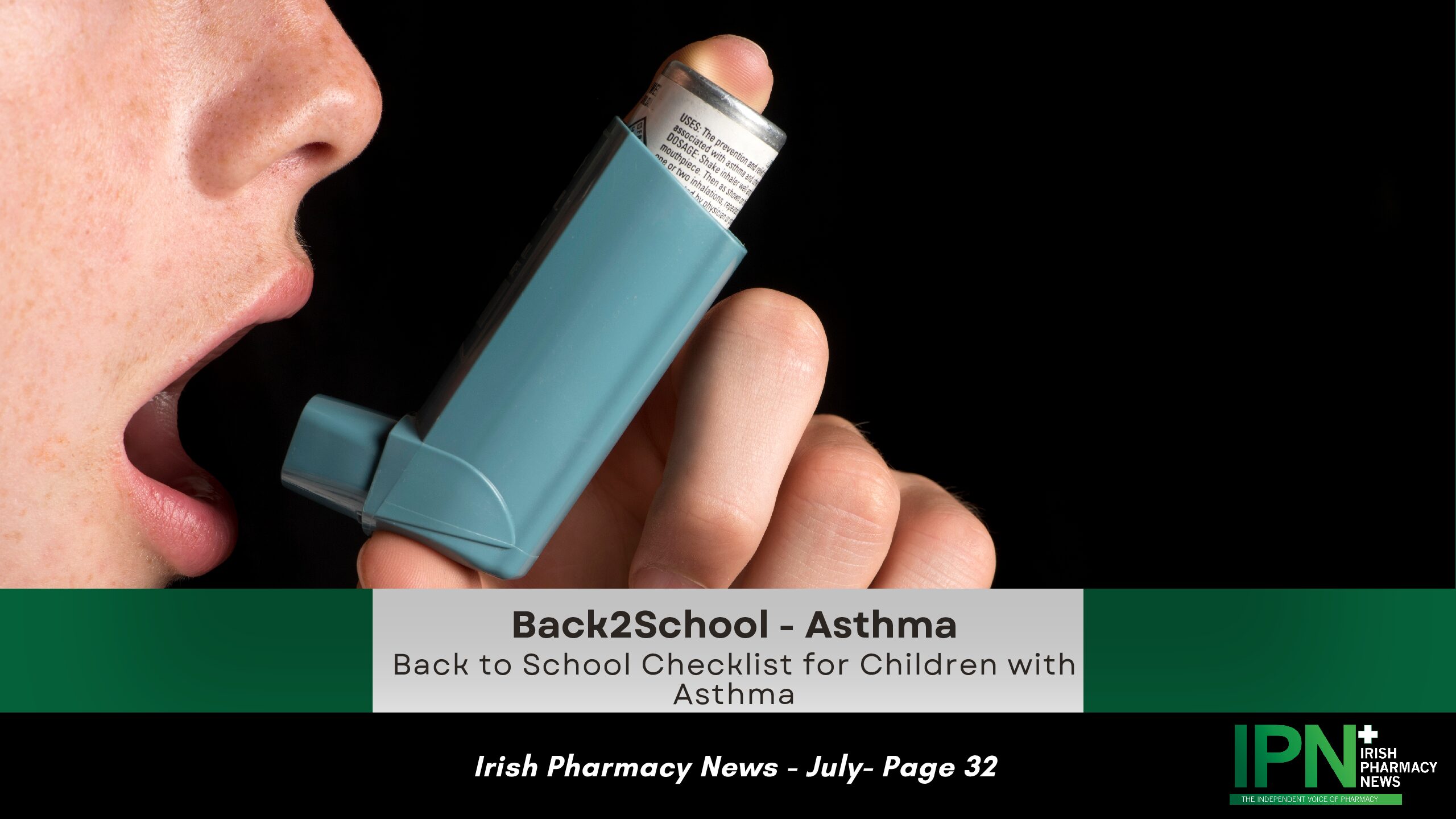Back to School Checklist for Children with Asthma
Asthma is the most common chronic condition among children, affecting 1 in 10 children and adolescents under 18. Children with the condition miss on average five days of school each year, making it one of the leading causes of absenteeism.
There is a dramatic rise in the number of children admitted to hospital for their asthma in September each year known as the “September spike”. Triggers which are commonly found in schools include:
• Chemical fumes
• Perfumes
• Aerosols
• Chalk dust
In addition, changes in weather, an increase in fungal spores, moulds and in an increase in circulating viruses such as RSV all contribute to an increase in asthma symptoms at this time of year.
Advice for parents:
This checklist should help you control your child’s asthma during September and into the winter months.
• Have your child’s asthma reviewed by your GP in August/ September
• Ensure your child has an Asthma Action Plan and it is up to date
• Use the inhaler technique videos on asthma.ie to help your child take their inhaler properly
• Make sure your child carries their reliever inhaler (usually blue) at all times
• Check that they take their medication every day with a fridge planner
• Leave a spare reliever inhaler and spacer in the school, with their name clearly labelled
• If your child is participating in PE or other activities, place a reliever inhaler and spacer in their bag
• Never send a sick child to school
• Show them how to wash their hands correctly and explain why this is important
• An older child/teenager often require extra supervision and cannot be relied on to selfmedicate independently – put systems in place as they may avoid taking their medication
• Visit the school and make sure your child’s teacher is aware that they have asthma
• Explain what their triggers are and what to do if your child has an asthma attack
• Check if there is a School Asthma Policy in place
• If your child is starting a new school, speak to teachers about your child’s asthma, even if they are well right now
Asthma Policy for Schools
The Asthma Society of Ireland recommends that all schools have an Asthma Policy in place that is reviewed regularly. As part of their Asthma Policy, it is also recommends that schools create an asthma record sheet for all students with asthma. The Asthma Society is warning teachers to be vigilant for asthma triggers at this dangerous time of year and to talk to parents to ensure you are aware of any students with asthma in your class.
Students with Asthma – advice for teachers
When a student with asthma joins your class, there are a number of steps can be taken to ensure they are supported as much as possible which include:
• Familiarise yourself with the school’s Asthma Policy
• Always ensure that students with asthma have access to their reliever inhaler including during school trips, sports and PE. Relievers should never be locked away.
• Tell parents when their child has an attack or needs their reliever inhaler in school and encourage older students to tell you or another staff member if they use their reliever.
• Speak to parents about concerns over missed days, tiredness in class due to night-time symptoms or lack of concentration due to asthma. Students with severe or poorly controlled asthma may require extra support due to missed school days.
• Monitor students with asthma to ensure they don’t feel excluded or experience bullying.
• Provide opportunities for all students to learn about asthma in class.
• Think about requesting resources from the Asthma Society of Ireland to ensure the school is well informed about asthma and how to manage the condition.
Once you know what triggers the child’s asthma, you can take practical steps to reduce their impact.
• Damp dust chalkboard and classrooms regularly to get rid of dust mites and pollen
• Don’t keep furry or feathery pets in the classroom.
• Try to avoid fumes in science and art classes.
• Rigorously enforce a nonsmoking policy on school grounds.
• Make sure the school is cleaned regularly.
• Heating and ventilation systems should be well maintained.
• Air classrooms to avoid mould and condensation.
• Avoid plants that give off high amounts of pollen
• Use non-latex gloves.
• Make sure that play areas and sports fields are free of autumn leaves as they are full of mould and fungal spores.
• Avoid mowing sports fields or grassy areas during school hours.
• Make sure changing rooms and bathrooms are well ventilated.
• Avoid opening windows and allow students with pollen allergies to stay indoors when pollen is high, such as during and after thunderstorms.
P.E. and Sports
Exercise improves lung function and is an important part of a healthy lifestyle. Asthma symptoms shouldn’t stop children from taking part in sport and PE, provided that certain precautions are taken.
This article has addressed managing asthma in schools at a time of year when asthma can be increasingly problematic. Strategies for children, parents and teachers were discussed.
Read July IPN
Read our Latest Features











